St. Leo the Great Catholic Church was established as a Mission of Saint Mary of Sorrows Catholic Church, Fairfax Station. The first Mass at St. Leo the Great was celebrated in 1956. In 1957, St. Leo was officially established as a Parish. The Church was dedicated in 1966. Our Stained glass are made in the style known as "Dalle-de-Verre" or "Slab Glass." It resembles man's early efforts at glassmaking which was difficult to cut and not very transparent. It was celebrated not for its practical properties, but for its jewel-like brilliance. For St. Leo's, the artist (Jean Jacques Duval), selected warm colors to create an atmosphere conducive to worship and couple the stained glass images together to tell the story of our redemption.
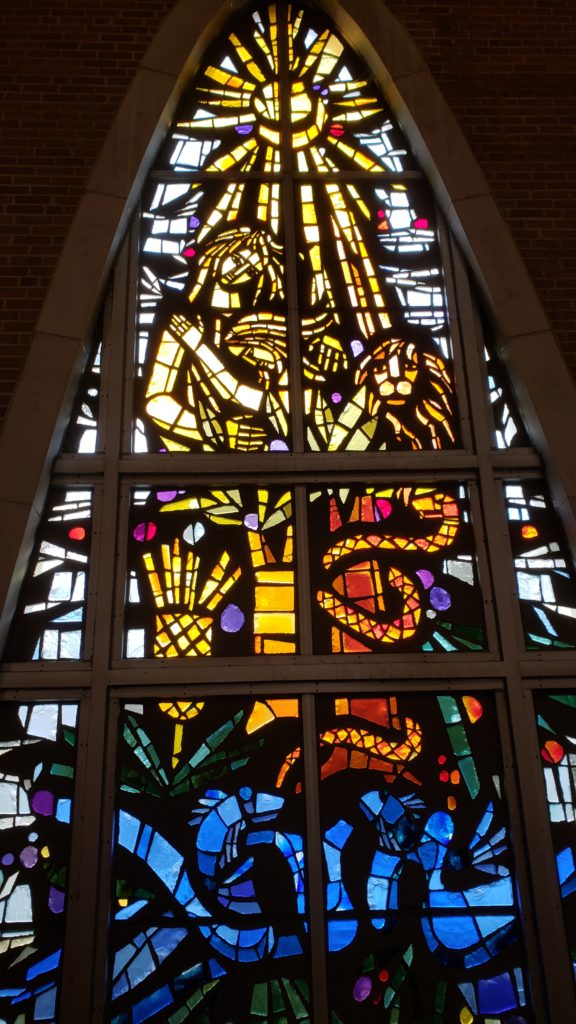
Creation
Depicting the days of creation: the sun and the moon, humanity: Adam and Eve, beasts of the land and sea.
The Fall from Grace dominates the scene with the image of the serpent coiled around the Tree of life coupled with the thistle, a symbol of earthly sorrow and sin.
The anguish of Adam and Eve is not without hope though. Taken together with the other stained-glass windows, we see the fulfillment across the sanctuary with the Resurrection of our Lord in which creation is restored and the new Adam unites all to Himself.
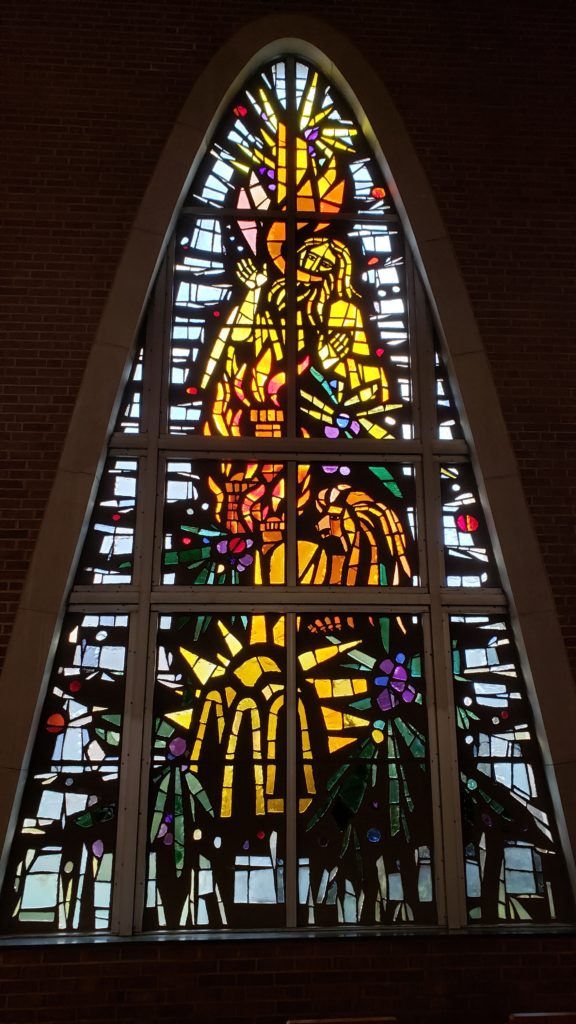
The Four Major Prophets The prophets of the Old Testament, yearning for the promised Messiah, prefigure the four Evangelists of the New Testament, proclaiming His arrival. From top to bottom: Isaiah- Foretold the coming of Christ and the mysteries of our redemption. He prophesied the calling of the Gentiles and the glorious establishment of Christ's Church. He is represented by a six-winged Seraph, alluding to Isaiah 6. Isaiah, in Hebrew, signifies the Salvation of the Lord. Jeremiah- Represented by flames surrounding a city. The symbolism evokes Jeremiah's prophesy of the destruction of Jerusalem. Daniel- Represented by a lion from one of the most famous accounts about him. Daniel, whose name means the Judgment of God, was of the royal blood of the kings of Judah. Ezekiel- Represented by the hills with the rising sun. He prophesied greatly about the restoration of Jerusalem (built on Mount Zion) and the kingdom of God. His names means strength of God.
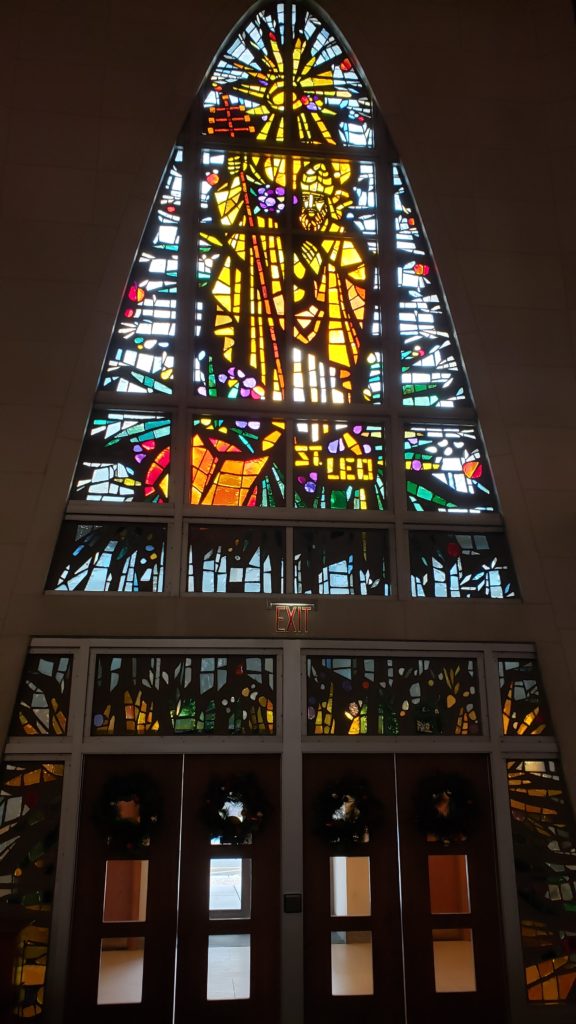
St. Leo the Great Patron of our Parish, St. Leo the Great was the first of the popes to receive the title: "The Great." He was bishop of Rome from 440-461A.D during the final days of the Western Roman Empire. There are 150 Letters of his and many homilies which manifests his great love for the faith, confidence in orthodoxy, and clear-visioned understanding of the hierarchy of the Church. He defended the office of the Holy See and reminded other bishops of their dependence upon the office of Peter as the font of all authority. He is most famous for the Tome of Leo (click to read it!), in which, St. Leo stoutly defended and clarified the hypostatic union of Christ as being both true God and Man contradicting the Nestorian and Monophysite heresies. The crosier in St. Leo's hand, with the three bars, indicates that his is the Bishop of Rome, Metropolitan Archbishop of the Roman Provence, and the Vicar of Christ on Earth. St. John Paul II (the Great) carried this crosier on the feast of the Annunciation in 1983 A.D. while opening the great Holy Doors of St. Peter's Basilica in Rome.
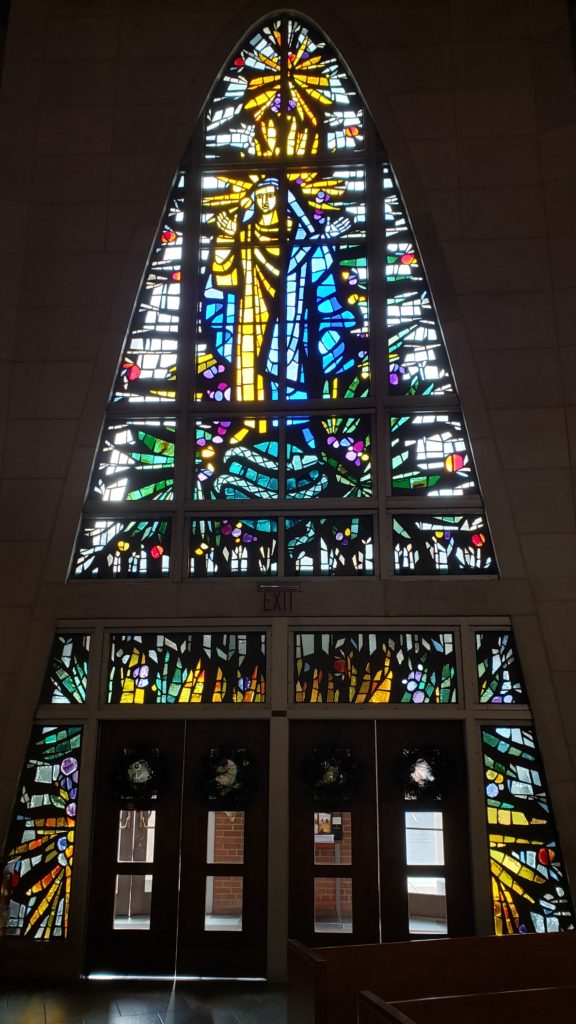
Immaculate Conception
Our great nation is dedicated to the Immaculate Conception and entrusted to her intercession.
Depicting the serpent from the first stained-glass, we see how Mary's Fiat (yes), contradicts the yes of Adam and Eve and fulfills the promise we hear of in Genesis 3:14-15 -
Then the Lord said to the serpent: "I will put enmity between you and the woman, and between your offspring and hers; He will strike at your head, while you strike at his heel."
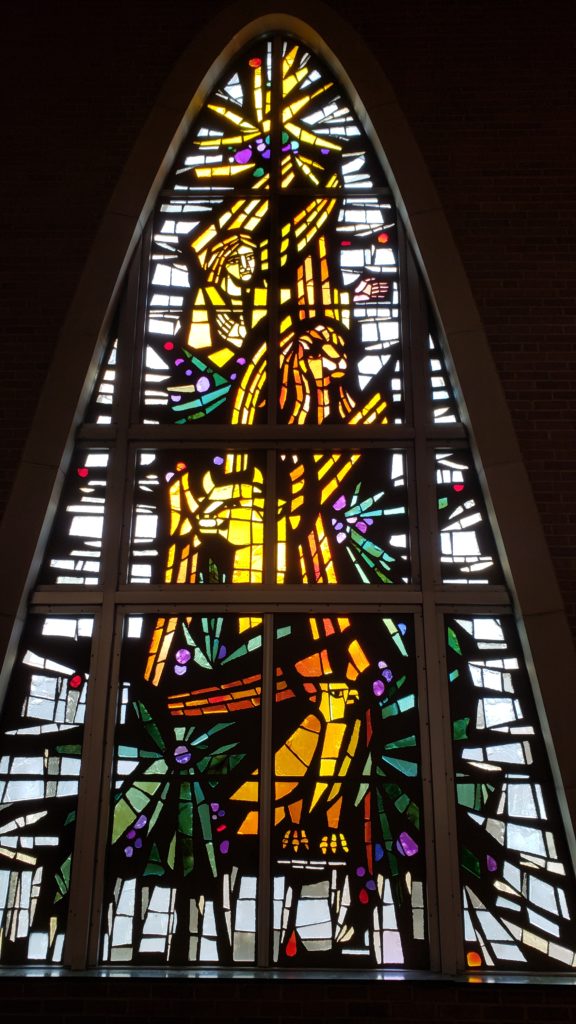
The Four Evangelists Complimenting and proclaiming what the great prophets awaited, the Evangelists announce Christ in their writings to help encounter and understand Christ. From top to bottom: St. Matthew- The winged man expresses the character found in St. Matthew's Gospel who constantly parallels Jesus' life to the Old Testament as the fulfillment of all things. Matthew's genealogy manifests this tracing Jesus' human heritage all the way back to Abraham. St. Mark- The Lion, king of the earth, expresses St. Mark's depiction of Jesus as the Son of Man and Son of God. St. Mark's Gospel begins with: The voice of one crying out in the wilderness. St. Luke- The Ox, animal of sacrifice, depicts Jesus' priestly and physician office who rectifies, sacrifices, and heals in His Passion. St. John- The Eagle, king of the sky, represents St. John's lofty theology and profound presentation of Christ the eternal Son of God, Word of the Father who has become flesh.
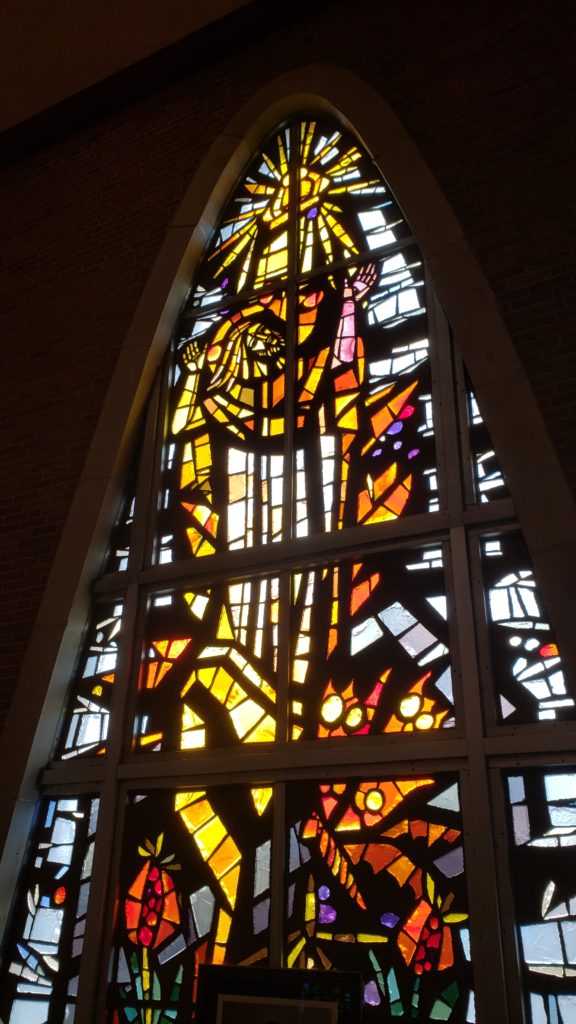
The Resurrection
Why do you search for the Living among the dead? He is not here; He has been raised up. Luke 24:5-6
Jesus' Passion and Resurrection is the absolute cornerstone of faith and response to the fall of man and the suffering we find on earth. It is also the greatest cause of our joy and the reason we gather on Sunday as the Lord's day, the day of the new creation.
Three images stand out: the illuminated Trinity above Christ who manifests the life, love, and truth of God in His humanity. Below Christ: the pomegranate - historically cultivated by kings provides a sharp contrast to the weed of the thistle. The butterfly - symbol of the resurrection, new life, and eternal life.
